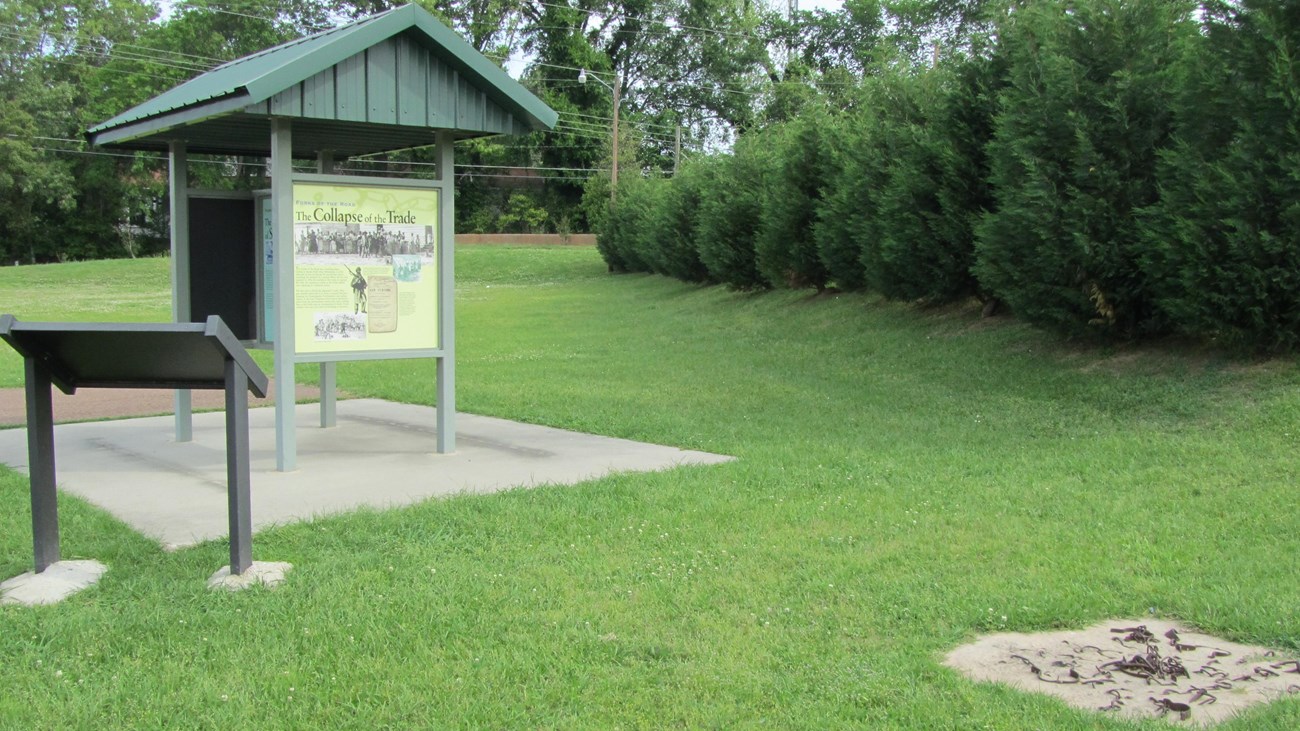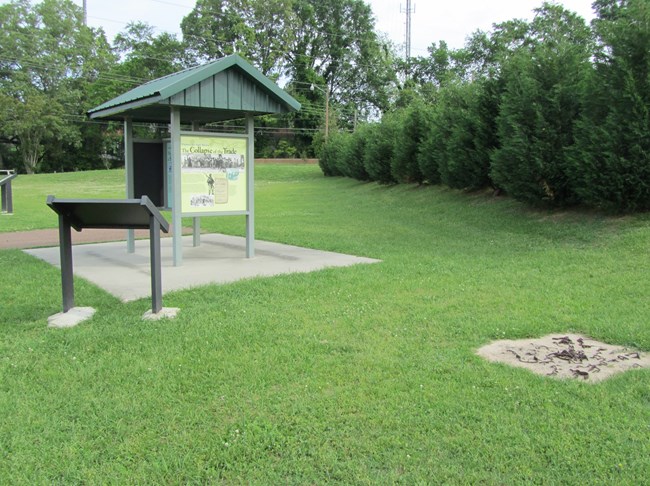Last updated: April 16, 2024
Thing to Do
Visit Forks of the Road

NPS
Visit the site of the second largest domestic slave market in the Deep South. In the mid-19th century, tens of thousands of men, women, and children were brought in chains and coffels from the Upper South to the slave market in Natchez. Today, exhibits at the site provide information not only about the Domestic Slave Trade in general, but about the City of Natchez as the Center of Slavery during this period.
Details
Activity
Museum Exhibits
Pets Allowed
Yes
Activity Fee
Yes
Entrance fees may apply, see Fees & Passes information.
Reservations
Yes
Accessibility Information
The site at Forks of the Road is relatively small and consists primarily of free-standing exhibits and wayside panels that are accessible. There is also an artistic depiction of slave manacles and chains in a concrete form. The entire site is accessible and easy to navigate. Most of the exhibits are located close to an adjacent sidewalk and some may be viewed from your car. Pets are welcome.

Prior to the establishment of the market, slave trading was a common sight on almost every street corner in the town. In 1832, however, the fear of a cholera epidemic caused municipal officials to force human traffickers outside the city limits. Traders set up business at the Forks of the Road, at the intersection of what is today known as Libery Road and D'Evereux Drive, one mile east of downtown Natchez and at the end of the Natchez Trace. Tens of thousands of enslaved men, women and children were transported from Virginia, Maryland, Kentucky, and the Carolinas to the market at Natchez. The slave market operated from 1833 until the arrival of Federal troops on July 13, 1863.
In the fall of that year, members of the 12th Wisconsin Infantry, stationed in Natchez, were given orders to tear down the slave pens at the Forks of the Road. They were joined in their efforts by the men of the newly created 58th Regiment of the U. S. Colored Troops. In a letter to the Milwaukee Sentinel, an unidentified member of the 12th Wisconsin described the event.
Our first quarters were in a long range of barracks used for a number of years as slave pens.
Very many of the men composing the regiment had been sold in them; brought from Kentucky, Tennessee, Virginia and other slave States, in large gangs ironed, they were placed in these dungeons until a sale could be effected. These buildings were situated in outskirts of the city and owned by an Irishman, the worst secessionists in the whole country. As the position was very much exposed, we were ordered to construct barracks within the fortifications and to tear down these slave pens to obtain lumber to build them. This order was received just at evening and was hailed with the wildest enthusiasm by these men who had been chained, gagged and whipped, and suffered tortures unutterable within these same walls, and through that long night they worked with a terrible earnestness and the morning saw the slave pens of Natchez leveled to the ground, never, it is hoped to be again reconstructed. During this work many a thrilling remimbrence [sic] was recalled of the cruelty of traders, of sad partings of husband and wife, of inhuman fathers selling their own children, and a thousand other incidents illustrating the detestable state of society at the South.
